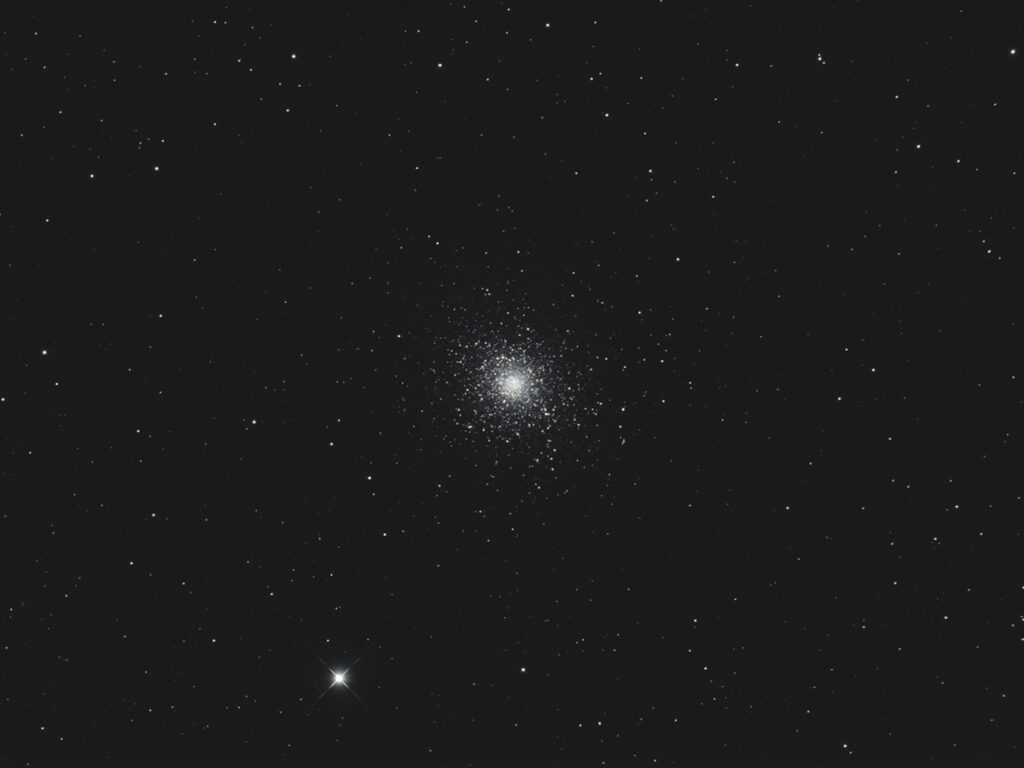
Telescope: Astro-Tech 8” f/8 Ritchey-Chretien, Orion Atlas EQ-G
Camera: Full Spectrum Modified Nikon D810, Baader Mk III MPCC
Filter: GSO IR Blocking Filter
Guide scope: Astro-Tech 60mm, ZWO ASI120MM mini, PHD2
Exposure: 50x60sec, ISO 200, saved as RAW
Darks: Internal (Long Exposure Noise Reduction On)
Flats: 32×1/20sec, Tee shirt flats taken at dusk
Average Light Pollution: Red zone, Bortle 8, fair transparency
Lensed Sky Quality Meter: 18.4
Stacking: Mean with a 1-sigma clip.
White Balance: Nebulosity Automatic
Software: Backyard Nikon, Nebulosity, Photoshop
Like many globular clusters M5 is a relic of the early universe with an estimated age of 13 billion years. It is also one of the largest known globular clusters home to as many as 500,000 stars in a region 165 light years across. Its large size has been a major factor in its longevity. Globulars near the galactic plane slowly disperse as they lose stars to the Milky Way. However, M5 is so large that it has been able to hold on to most of its stars. At magnitude 5.7 M5 is an excellent target for small telescopes.
M5 is currently well placed high in the south at dusk. (Photo credit: John Graham, 5–30-2022)
Recent Comments